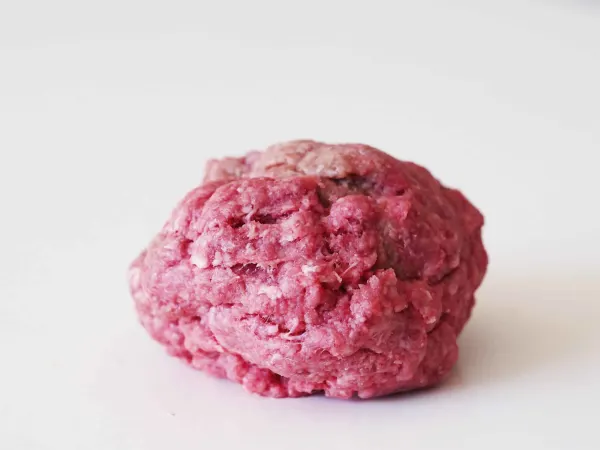Acceda a la base de datos First Foods® en Solid Starts App.
Leer másAvestruz
Carne
Sugerencia de edades
6 meses
Alto contenido de hierro
Sí
Alérgeno común
No

When can babies eat ostrich meat?
¡Lo sentimos, esta página aún no está disponible en español! Estamos trabajando tan rápido como podemos para traducir todo nuestro contenido, gracias por tu paciencia y apoyo.
Ostrich meat may be introduced as soon as your baby is ready to start solids, which is generally around 6 months of age. At this stage in their lives, babies (and especially breastfed babies) need lots of iron, protein, and zinc on a regular basis. Ostrich has all of these essential nutrients and more!
How do you prepare ostrich meat for babies with baby-led weaning?
Cada bebé se desarrolla a su propio ritmo, y las sugerencias que ofrecemos sobre cómo cortar o preparar determinados alimentos son generalizaciones para una amplia audiencia.
6 to 7 months old:
Try serving well-done strips of ostrich meat, about the size and length of two adult fingers together. Ironically at this age, the bigger and more resistive the food, the easier and safer it is for your baby to consume. Be sure to remove loose gristle and offer a whole strip to your baby, who will be able to get a decent amount of nutrients just by sucking on the meat. If your baby is able to tear off pieces of the meat while munching, move on to ground patties.
8 to 12 months old:
Serve ground ostrich in the form of a patty alongside applesauce or yogurt, which will add moisture and aid swallowing. If a too-big piece of meat breaks off in your baby’s mouth, try not to intervene. Gagging is both normal and healthy in this developmental stage, as babies learn to move food around in their mouths. If you’re worried, coach your baby to spit out the piece of meat by dramatically sticking out your own tongue and saying “blah” repeatedly.
12 to 24 months old:
Continue with ground ostrich patties. Serving a patty on top of applesauce, mayonnaise, or yogurt aids swallowing. You may also try cooking ground or minced ostrich and serving the crumbled meat on its own or mixed into a dish of lentils or rice. If you feel your child has become an advanced eater (chews well, swallows easily, puts an appropriate amount of food in their mouth and doesn't over-stuff), you can offer bite-sized pieces as a finger food (just avoid serving chunks or cubes of meat, as these pose a higher choking risk).
¡Lo sentimos, esta página aún no está disponible en español! Estamos trabajando tan rápido como podemos para traducir todo nuestro contenido, gracias por tu paciencia y apoyo.
For more information on how to cut food for babies, visit our page on Food Sizes & Shapes.
Videos
Is ostrich meat a common choking hazard for babies?
Yes. Meat is a common cause of choking and must be prepared in an age-appropriate way for your baby. Never serve cubes or chunks of meat to your baby.
For more information, visit our section on gagging and choking and familiarize yourself with common choking hazards.
Is ostrich meat a common allergen?
No. Ostrich is not a common food allergen, though in theory, one could be allergic to any food. When introducing ostrich for the first couple of times, serve a small quantity and watch closely as your baby eats to monitor for any signs of a reaction.
Is ostrich meat healthy for babies?
Yes! Ostrich is a rich source of iron and protein—essential nutrients that your baby needs to grow and thrive. When it comes to protein, ostrich is on par with bison and pasture-raised beef. Compared with conventional beef, ostrich contains almost double the amount of vitamin B12 and notably higher levels of all other B-vitamins, iron, and selenium. Zinc levels are slightly lower than beef, yet ostrich is still an excellent source of the essential nutrient.
Background and origins of ostrich
Ostrich is a lean red meat with similar color, taste, and texture to beef (though ostrich meat has more iron, and less fat than beef). The large bird is native to Africa, where ostrich is a common source of protein in the human diet. In the United States, ostrich remains a specialty food product, yet ostrich farming is becoming increasingly popular as raising the birds is more efficient in many ways than raising beef cattle.
Ostrich is a terrific (though pricey) alternative to beef, but the meat can be hard to find at the average American grocery store. Unless you live near an ostrich farm or a local farmer’s market that offers the product, try placing an online order of frozen ostrich meat from specialty food stores or directly from farmers. Illinois currently has the most ostrich farms in the United States.
Escrito y revisado por los/las siguientes especialistas
Consejos de expertos directo a tu bandeja de entrada
¡Suscríbete y recibe correos semanales con recetas, consejos y más!
Copyright © 2025 • Solid Starts Inc


